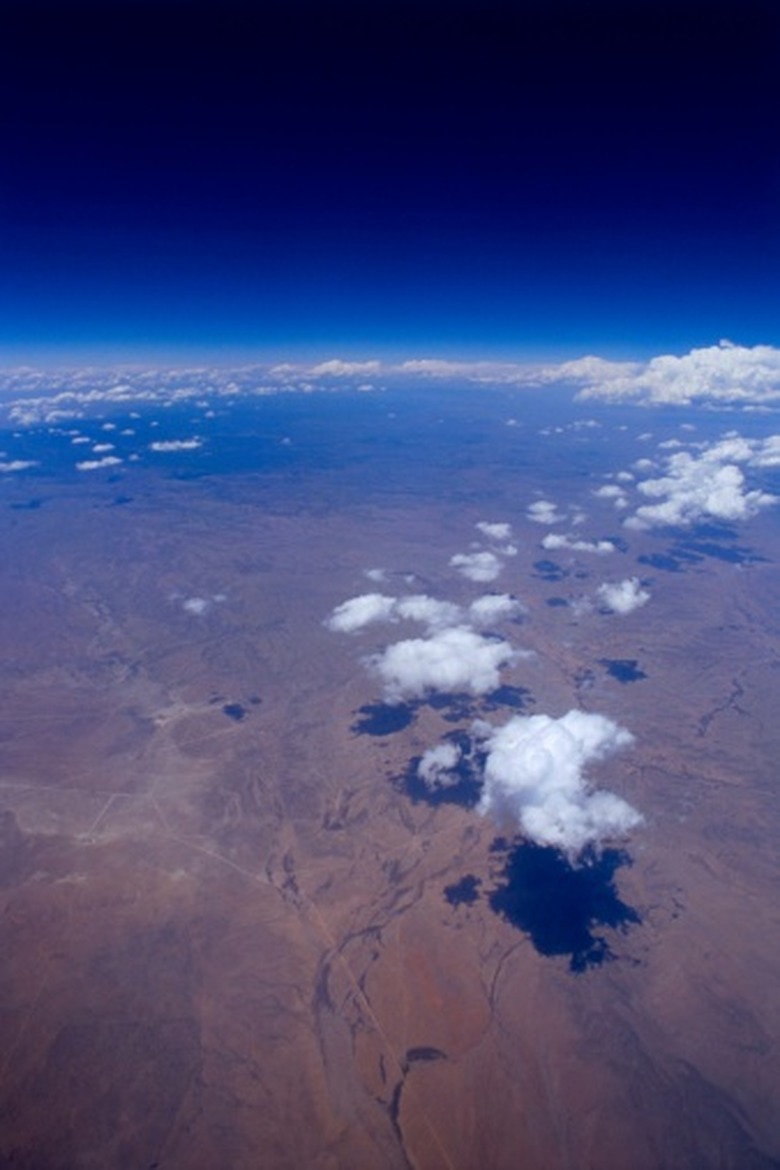What Are Six Properties Of The Earth?
The third planet from the sun, Earth has countless properties that make it unique from the other planets and planetary bodies within the solar system and within the Milky Way galaxy. It's one of four rocky planets along with Venus, Mercury and Mars and is the fifth largest planet behind Neptune, Uranus, Saturn and the largest, Jupiter.
Composition
Composition
Earth is the densest major body in the solar system at 5.52 grams per cubic inch. It's composed of 34.6 percent iron, 29.5 percent oxygen, 15.2 percent silicon, 12.7 percent magnesium, 2.4 percent nickel, 1.9 percent sulfur and 0.05 percent titanium.
Solar System Placement
Solar System Placement
Earth is positioned within the "habitable zone" of the solar system at 92,957,130 miles, making Earth unique within this solar system. This zone is defined as the distance from the sun where water can be found in solid and liquid form. If Earth were in Mercury or Venus' position, its atmosphere and water would evaporate. If Earth were pushed out to the position of Mars or further out near the gas giants, it would be too cold to sustain liquid water or life.
Dimensions
Dimensions
Around the equator, Earth is 7,926 miles in diameter and 24,902 miles in circumference. From pole to pole or along the Meridional axis, Earth is slightly smaller at a diameter of 7,899 miles and with a 24,860-mile circumference. This is due to the Earth's rotation, which causes the Earth to bulge at the equator and flatten at the poles, creating a shape called an oblate spheroid.
Rotational Properties
Rotational Properties
Earth leans on a 23.5-degree angle from vertical, rotating on that axis once every 24 hours at 1,000 miles per hour.
Surface Properties
Surface Properties
Earth's surface is covered with 71 percent water. This liquid water is essential for life and is also responsible for the erosion experienced on Earth's land masses. The effects of erosion and tectonic plate movement have rendered Earth's surface younger than the actual age of the planet by about 500,000,000 million years. In other words, the Earth is believed to be 4.5 to 4.6 billion years old; however, the oldest known rocks are four billion years old, with rocks older than three billion years being rare.
Earth's Layers
Earth's Layers
Earth's layers comprise five unique zones called the crust, upper mantle, transition region, lower mantle and the core. The crust reaches down 24 miles and is composed primarily of quartz. The upper mantle, where 4.043 of the Earth's 5.52 gram per cubic centimeter mass is held, is 224 miles thick and is composed of olivene and pyroxene (iron/magnesium silicates). The transition zone is 250 miles thick and is the region where liquid magma begins to harden while subducted mantle rock melts into magma. At 403 miles below the surface, the lower mantel is composed of mostly silicon, magnesium and oxygen with trace amounts of iron, calcium and aluminum. Found at a depth of 2,167 miles, the core is composed of iron with some nickel and is the source of Earth's magnetic field due to its churning.
Cite This Article
MLA
Hayes, Kelvin. "What Are Six Properties Of The Earth?" sciencing.com, https://www.sciencing.com/six-properties-earth-8371705/. 24 April 2017.
APA
Hayes, Kelvin. (2017, April 24). What Are Six Properties Of The Earth?. sciencing.com. Retrieved from https://www.sciencing.com/six-properties-earth-8371705/
Chicago
Hayes, Kelvin. What Are Six Properties Of The Earth? last modified March 24, 2022. https://www.sciencing.com/six-properties-earth-8371705/
